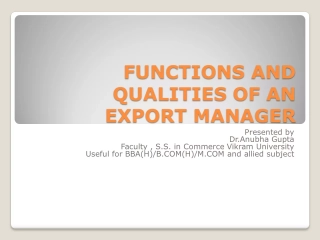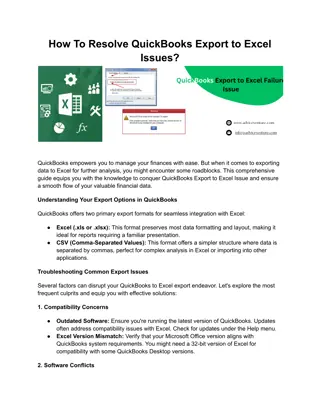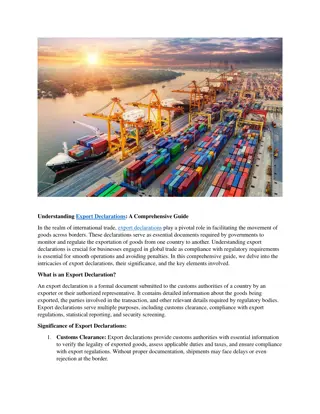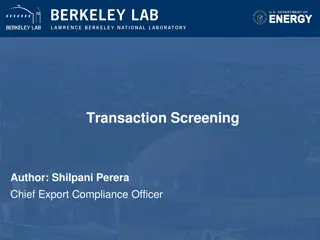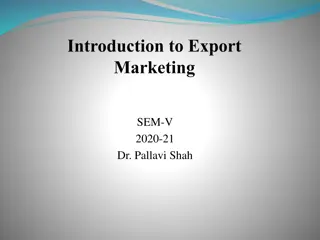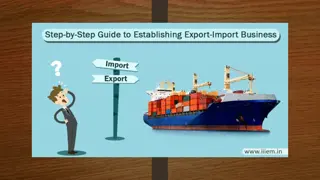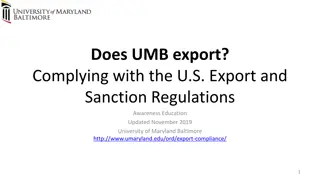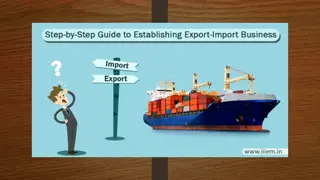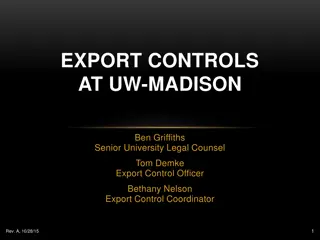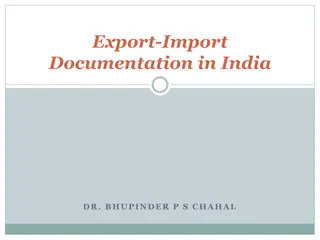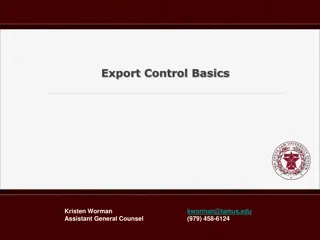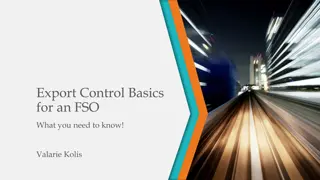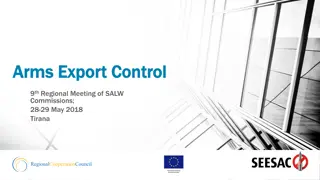
Serbia Export Controls: Legal Basis, Practices, Challenges & Cooperation
Explore Serbia's post-export controls led by Jasmina Roski, covering legal basis, good practices, challenges, and regional cooperation. Learn about the legislation, end-user certificate verification, risk assessment, outreach, and post-licensing processes in place.
Uploaded on | 1 Views
Download Presentation

Please find below an Image/Link to download the presentation.
The content on the website is provided AS IS for your information and personal use only. It may not be sold, licensed, or shared on other websites without obtaining consent from the author. If you encounter any issues during the download, it is possible that the publisher has removed the file from their server.
You are allowed to download the files provided on this website for personal or commercial use, subject to the condition that they are used lawfully. All files are the property of their respective owners.
The content on the website is provided AS IS for your information and personal use only. It may not be sold, licensed, or shared on other websites without obtaining consent from the author.
E N D
Presentation Transcript
Republic of Serbia Post-export controls Jasmina Roski , Head of Department Ministry of Trade, Tourism and Telecommunications Tirana, May 2018
CONTENT 1. Legal basis 2. good practices - measures and systems in place 3. challenges at national/international level 4. regional cooperation
LEGAL BASIS Legislation in line with EU legislation-criteria International documents WA Best Practice Guidlines for Export of SALW OSCE SALW Document EU User Guide requires states to avoid issuing licenses for export of SALW if there is a CLEAR RISK that the arms might be either resold (or otherwise diverted)within the recipient country, reproduced without licence or be re-exported
Legal basis (cont.) Law on export and import of Arms and Military Equipment ( Official Gazette RoS , no 107/14) Article 14 - form and content of end user certificate Delivery Verification Certificate at the request of the exporter. IIC Article 26 National Control List of Arms and Military Equipment-harmonized with the EU Military List 2018
Measures and systems in place Pre-licences phase (end user certificate verification, risk analysis, outreach) Post-licensing phase (customs documents, DVC, record-keeping, reporting)
End-user certificate verification MFA Other sources depending on goods and country publicly available information on final end user Internet Interministerial cooperation Risk assesment database (Wiskonsin project and others...)
RISK ASSESSMENT Based on case by case approach Indicators of potential diversion Cooperation: - interministerial, - regional, - international
OUTREACH Industry have to be informed and responsible The role of the Ministry
POST LICENSING CUSTOMS DVC RECORD KEEPING REPORTING
Good practices END USER DATABASE INFORMATION EXCHANGE REPORTING
CHALLENGES Timeframe for issuing license (pressure) Changes (route, place of delivery etc.) diversion
Diversion In general terms, diversion is the transfer of items from an authorized owner/user to an unauthorized user. Diversion of weapons is a key method by which States under arms embargo, human right abusers, terrorists and organized criminal groups obtain weapons.
Diversion (cont.) Exporting, transit/trans shipment and importing States Parties shall cooperate and share information, pursuant to their national laws, to mitigate the risk of diversion of arms transfers. When a State Party detects diversion of transferred weapons it should also alert potentially affected States Parties. State Parties should share information on their experiences in addressing diversion.
Further steps Regional database-update End user database-update International support Simplification of the issuing license procedure among the credible partners transparency
THANK YOU FOR YOUR ATTENTION Izvozna.kontrola@mtt.gov.rs jasmina.roskic@mtt.gov.rs

